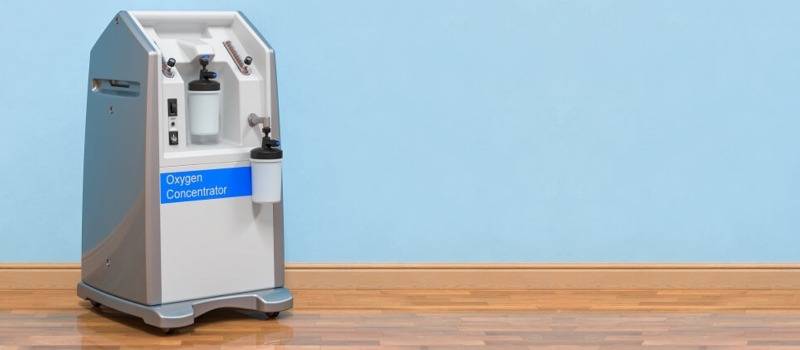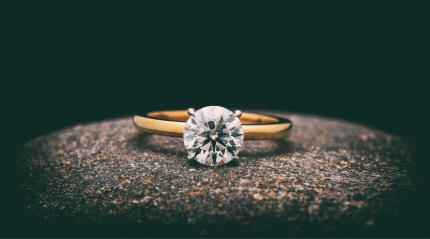Oxygen Concentrators: Tips for Beginners
- 6 October 2022

If you're new to the world of oxygen therapy, the idea of having to read complicated instructions to figure out how to use your oxygen concentrator might seem like a daunting task.
After all, modern medicine is replete with complicated technology that is difficult to understand just to say the least. A device that is seemingly as simple to operate as an oxygen concentrator can be a real head scratcher until you actually use it. From there, the simplicity becomes apparent and you'll wonder why you didn't choose this route sooner. In other words, your body's largest organ is capable of delivering much more relief than you would ever believe and it's all thanks to cutting edge technology.
If you're looking for a one-stop-shop for all your home oxygen needs, this article is for you. We'll cover the basics of oxygen therapy, including how and why you need it, as well as go over some tips on how to operate and maintain your oxygen concentrator. So, let's get started.
How Oxygen Is Different From Air
While air is important in keeping our bodies alive, we need more than just air to stay healthy. Oxygen, the substance that we and all living things require to live, is quite different from air. To put it simply, oxygen is more effective than air in helping us become healthier. This is due to the simple fact that oxygen is more readily available to us when we need it. If you look at the statistics, you'll see that around 95% of the oxygen we consume is used by our bodies.
While this figure seems high, it's actually quite low. The truth is that our bodies are constantly producing more oxygen than we need. This is why it is said that our bodies are more oxygen-efficient than others. So, when you consider all the oxygen we exhale through our breathing, the amount of oxygen we need is quite small. In fact, you'll often hear people say that a glass of wine or two a day can improve your health. This is because alcohol inhibits the absorption of oxygen in our bodies. So, if you're looking to improve your health, consider an oxygen-rich diet as well as drinking plenty of water.
Why Oxygen Concentrators Are Important
The human body is a remarkable creation. It's said that we don't just survive but that we thrive thanks to the wonderous products of nature that interact with our bodies and allow us to live. One of these products is oxygen. Our bodies are unable to produce it on their own and so we must obtain it from external sources. This is where oxygen concentrators come in. They are devices that are used to collect and distribute oxygen to homes and clinics alike.
Oxygen has many significant applications. For example, if you're a smoker or suffer from chronic obstructive pulmonary disease (COPD), you might find that an oxygen concentrator helps you to breathe easier. If you look into it further, you'll discover that oxygen is vital in the treatment of many diseases. Let's say that you have a parent or grandparent who suffers from Alzheimer's disease. While there is no known cure for Alzheimer's disease, there is research suggesting that having oxygen therapy might slow the progress of the disease. This is because the Alzheimer's disease affects the brain and the brain tends to need more oxygen than other parts of the body. This is why in some cases, the disease affects people more than they know what to do with. It really is a sad story.
Home oxygen therapy is available if you or a loved one suffer from chronic hypoxia caused by a permanent or long-term respiratory condition. As previously stated, oxygen is vital for our bodies and without it, quite a few diseases might become fatal. This is why it's important to ensure that we obtain oxygen where and when we need it. If you find that you don't need oxygen during the day, it might be beneficial to buy an oxygen concentrator to provide it when you need it. Home oxygen therapy can also be used in an attempt to wean a patient off of using continuous positive airway pressure (CPAP) machines. If you're unfamiliar, a CPAP machine is a type of sleep apnea treatment that involves a plastic mask that is either heated or cooled according to the preferences of the user. As you might expect, the cool aspect makes it ideal for night use and the heated version is better suited for daytime use. However, some people might experience problems with mask discomfort and so they opt for oxygen therapy. This is not necessarily a bad choice since it is highly effective in treating sleep apnea. In fact, the vast majority of sleep apnea patients experience significant relief after just a few weeks of oxygen therapy. Furthermore, when used in combination with a CPAP machine, oxygen therapy helps to improve the effectiveness of the CPAP. In other words, it enhances the apnea treatment as a whole.
Taking all this into consideration, we can see that oxygen concentrators are important because they provide us with the oxygen we need when and where we need it. This leads to better health and a longer life for us and it's all thanks to the efforts of medical researchers who dedicated themselves to curing diseases and improving the quality of life for all humankind. If you're interested in exploring the many benefits of oxygen therapy, be sure to consult with your doctor to determine whether or not you're a viable candidate for home oxygen treatment. And for those who are, the rest is simply up to you.
How To Operate Your Oxygen Concentrator
Now that we've gone over the basics of oxygen therapy, it's time to discuss some pointers on how to operate your oxygen concentrator. At first blush, it might seem quite complex to understand every aspect of operating an oxygen concentrator. However, if you actually use them regularly, the complexity becomes apparent and you'll wonder why you didn't do this sooner. It's all about having the right equipment and being able to operate it effectively.
When it comes to operating your oxygen concentrator, there are three basic aspects to consider: airflow, gas tightness, and the chemical make-up of the inhaled gas. Let's examine each one.
Airflow
This one might seem obvious but there are several factors to consider when it comes to effective airflow in your oxygen concentrator. First, the size of the cannula (the narrow tube that connects the air tank to the mask) plays a key role. The larger the cannula, the greater the airflow in your system. Second, the speed at which you breathe affects the amount of oxygen delivered to your lungs. Take a slow, deep breath and you'll reduce the oxygen level in your bloodstream. This, in turn, might result in drowsiness and a diminished ability to perform daily tasks. On the other hand, a fast, shallow inhale might cause your oxygen levels to shoot up which could potentially be harmful. Third, if you utilize an inhale valve, take into consideration how you hold your breath when using the device. In other words, if you keep breathing through your nose, you might not get the full benefit of the inhale valve since some of the oxygen is lost to the atmosphere right away. Finally, make sure that your mask fits securely over your nose and mouth. Check the straps and tighten them when needed to ensure a comfortable fit and, hopefully, some quality sleep.
Gas Tightness
This one might be a bit trickier to explain but it's really important to understand how gas tightness works in your oxygen concentrator. When you inhale, oxygenated air is drawn into your lungs. However, even after the oxygen reaches your bloodstream, it still needs to travel to your brain and all other areas of your body. This is where gas tightness comes in. The walls of your lungs and all the areas where your bodily fluids meet play a crucial role in preventing gases from escaping. In other words, even after your lungs and all the parts of your body that produce and use oxygen reach their highest point of efficiency, there is always the possibility that some gases might escape. In these cases, gas tightness is what makes up for the shortfall. This aspect becomes all the more important if you're using an air purifier in tandem with your oxygen concentrator. The reason is that even with the best intentions of having clean, fresh air, the purifier can't guarantee that all the pollutants will stay within. In other words, if you choose an electric purifier, it's imperative that you understand how to tune it correctly to remove all the toxins from the air.




